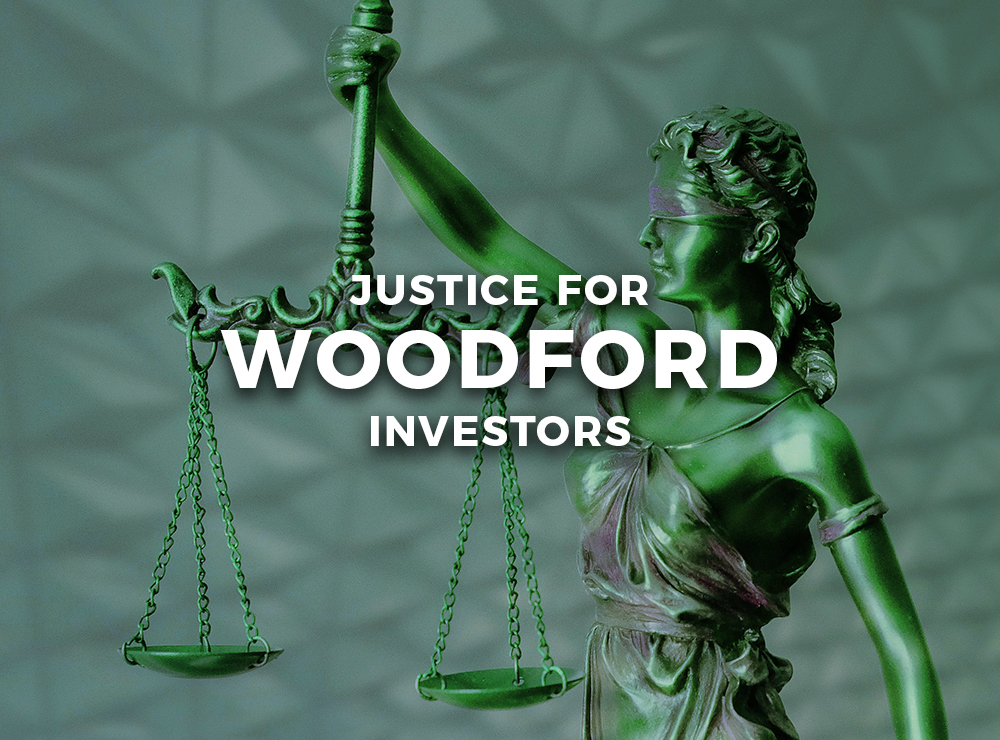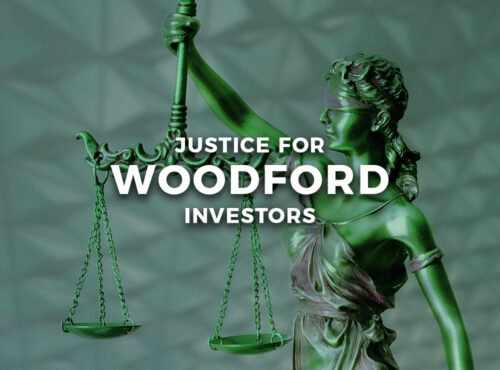
A new book on the Neil Woodford scandal is about to be published. When the Fund Stops by journalist DAVID RICKETTS charts the rise and fall of a fund manager who was once described as “Britain’s Warren Buffett”.
In Part 1 of this interview with Robin Powell, Ricketts recalls the years he spent writing about Woodford, and the dramatic collapse of his investment empire in the summer of 2019.
He also explains how Woodford’s performance deteriorated the more he invested in early-stage companies but how the warning signs were missed.
RP: David, you’ve covered hundreds of stories as a financial journalist over the years. How does the Woodford scandal that began in June 2019 compare to other stories you’ve worked on?
DR: This has to be one of the most exciting and probably one of the most shocking stories that I’ve worked on.
The departure of Neil Woodford from Invesco in 2014 was itself a very big news. I remember speaking to financial advisers at the time who said this was the biggest story of the decade.
The initial excitement about him setting up his own firm got a lot of interest and the coverage around that was immense.
But you’re right, the crunch came in June 2019 with the announcement that the Equity Income fund, Woodford’s one-time flagship fund, which at its peak managed more than £10billion of assets, was being suspended. The assets had dwindled to round about £3billion, but it was a big shock to everyone.
Of course, Neil Woodford had delivered very good returns over two decades at Invesco. How highly was he regarded as a fund manager?
He was a very well-known fund manager. He kind of had this “rock star” status, if you like. At Invesco he really did have a reputation of being infallible.
The period when he made a real name for himself was in the run-up to the tech bubble bursting. He was one of the few fund managers who refused to pile into tech stocks when all those around him were doing so. He refused to follow the herd. He was somebody who invested in traditional stocks, particularly tobacco stocks, and he remained loyal to those stocks during the late ‘90s. When the tech bubble burst he was vindicated.
He was also one of the few fund managers who didn’t hold any banks in the run-up to the financial crisis, and it was thanks to that that he became a sort of poster boy of the UK fund management industry. He really was seen as somebody who was head and shoulders above the rest.
So the question is, how did Woodford go from hero to zero? In your book you suggest that the seeds of his eventual failure were sown at Invesco, because it was there that he started investing in early-stage companies.
That’s right. It was in his latter years at Invesco that he started to venture into some of these less liquid, smaller companies that aren’t necessarily listed on the stock exchange. He spotted an opportunity; he thought these companies would offer higher potential for growth.
Towards the end of his career at Invesco there was a change in management as well. A new Chief Investment Officer was brought in. They began to ask more questions about Woodford’s investment process. An investment committee was set up to oversee, or keep a check on, some of the investments that he was making, and that committee was directly reporting to the CIO.
So Woodford became aware that he was being asked more questions about his investment process. Perhaps he wasn’t used to that level of scrutiny. He was used to being given free rein to invest in companies that he thought would deliver the best returns.
I think he started to feel that maybe he would be better off outside of a big organisation where there were so many hoops to jump through and questions being asked. I think the sense was that, maybe if he struck out on his own, he could make a lot more of these decisions himself — and justify his decisions — if it was just him and his immediate compliance team.
It was also around that time that the Financial Conduct Authority started to take an interest in what Woodford and his colleagues was doing, wasn’t it?
Yes, there was an FCA fine that was handed down to Invesco, and it was announced just a month before Woodford was due to launch the Woodford Equity Income fund.
The FCA found that about 15 Invesco funds — including Woodford’s High Income and Income funds — exposed investors to higher levels of risk than they were led to expect.
There’s nothing wrong with investing in companies that aren’t listed — there are lots of fund managers who do that — and there are European rules governing funds called UCITS that do permit managers to invest in unquoted companies. But there is a threshold that needs to be met; you can’t exceed ten per cent of the fund’s assets.
So the issue that became more apparent as Woodford moved into his new venture was, were investors fully aware of the extent to which he was doing this?
Yes, Woodford’s exposure to early-stage firms grew considerably at Woodford Investment Management, didn’t it?
That’s right, and I think that’s one of the reasons that Woodford came unstuck.
It’s really fascinating when you look into the outflows and the kind of proportion of the portfolio that the unlisted companies made up towards the end. There was a huge exposure to unlisted companies at that stage, because he was having to sell down the holdings in more liquid companies to meet redemption requests.
So you’re right, Woodford had started straying into these unlisted companies with Invesco, but at that stage it wasn’t a concern. Even with the launch of the Equity Income Fund in 2014, there were a few unlisted companies in the portfolio, but nothing to the extent to which he ended up with four or five years later.
The book is very balanced, and the picture you paint is of a decent man with ordinary human failings. He could be quite hot-headed, for example.
One of the great things about writing a book is that you can really get into the fine detail. Speaking to former colleagues, he had this “star” status; I suppose you could call it “ego” as well.
That comes through with some of the meetings he had with chief executives of the companies he invested in. He would often summon them to Invesco’s Henley office, because he had that status. He was such a powerful investor. Normally you’d expect fund managers to go the offices of the companies they invest in, but it kind of worked the other way round.
I spoke to a few people who said he would occasionally lose his temper, not necessarily with his colleagues but with the general frustrations of the companies he was investing in. Having a glass office meant that all of this emotion was on public display.
People said that you had to choose the right moment to approach him if you had a query about something because you didn’t want to get on the wrong side of him unnecessarily.
ROBIN POWELL is editor of The Evidence-Based Investor.
The original interview has been slightly edited for brevity and clarity.
In Part 2, David Ricketts talks about the role played by different parties in the unravelling of Woodford Investment Management. These include Link Fund Solutions, which had a fiduciary responsibility to protect the interests of Woodford’s investors, and the investment platform Hargreaves Lansdown, which is described in the book as Woodford’s loudest cheerleader.
When the Fund Stops by David Ricketts, is due for release by Harriman House on 26th January.
WOODFORD INVESTOR?
Did you invest with Neil Woodford?
The law firm Harcus Parker is bringing a collective action against Link Fund Solutions on behalf of Woodford investors.
If you hold, or have held, shares in the LF Equity Income Fund (formerly the LF Woodford Equity Income Fund) (the ‘Woodford Fund’) either directly, through an intermediary or in your SIPP, you may be entitled to claim for compensation.
To find out more, go to WoodfordClaim.com. You can join the claim by filling in your details.
FOLLOW THE CAMPAIGN
The Evidence-Based Investor is running a campaign called #JusticeForWoodfordInvestors. We’re going to be keeping investors abreast of the latest developments and explaining what their options are. To follow the campaign, search for the hashtag #JusticeForWoodfordInvestors on Twitter, Facebook or LinkedIn.
© The Evidence-Based Investor MMXXI







